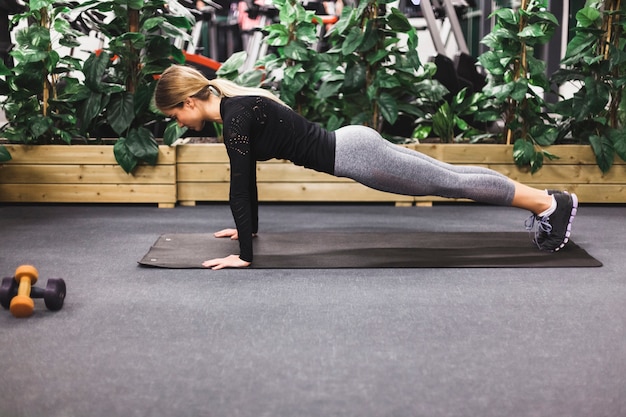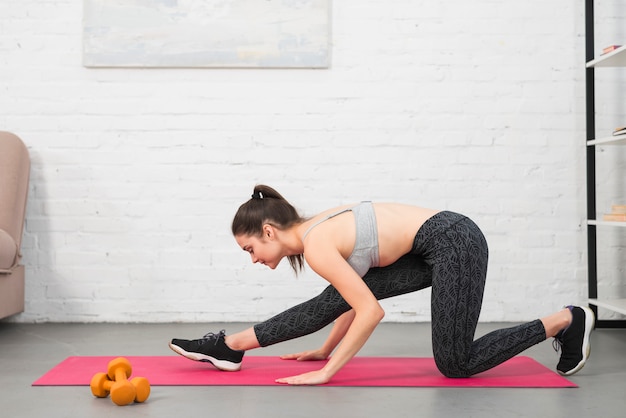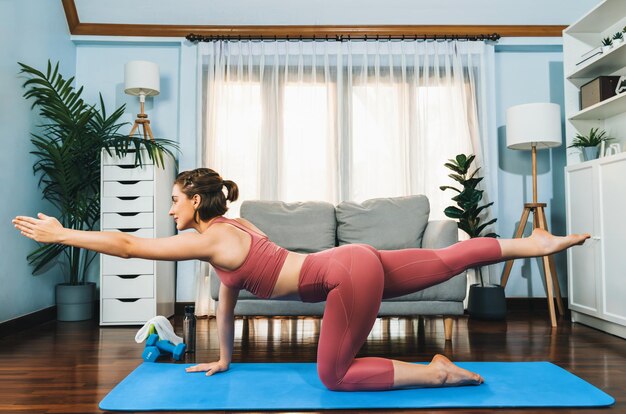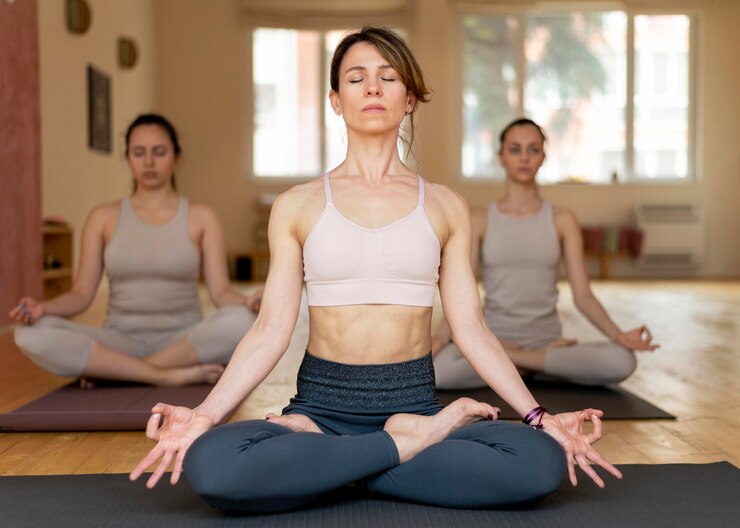Discover effective hip strengthening exercises to enhance stability and mobility, improve athletic performance, and prevent injuries. Unlock the power of strong hips today!
Introduction
In today’s world, where sedentary lifestyles have become the norm, engaging in regular physical activity is essential for maintaining overall health. Among various exercises, hip strengthening exercises play a pivotal role in enhancing our mobility, stability, and strength. Strong hips not only improve athletic performance but also help prevent injuries and alleviate pain. Therefore, dedicating time to strengthen this crucial area is vital for anyone, regardless of their fitness level. In this blog post, we will explore the importance of hip strengthening exercises, delve into various effective exercises, and provide tips on how to incorporate them into your routine.
Why Are Hip Strengthening Exercises Important?
The hips serve as a vital connection between the upper and lower body, enabling smooth movement and coordination. They are responsible for a range of motions, including walking, running, jumping, and squatting. Consequently, weak hip muscles can lead to instability, imbalances, and an increased risk of injury. Moreover, hip strengthening exercises enhance core stability, contributing to better posture and overall body alignment. Strengthening the hips not only benefits athletes but also individuals engaging in everyday activities, from climbing stairs to playing with children. Thus, focusing on these exercises is crucial for maintaining a healthy, active lifestyle.
Anatomy of the Hip
To understand the significance of hip strengthening exercises, it’s essential to grasp the anatomy of the hip. The hip joint comprises the femur (thigh bone) and the pelvis, creating a ball-and-socket joint that allows for a wide range of motion. Surrounding the hip joint are several key muscle groups, including the gluteus maximus, gluteus medius, hip flexors, and adductors. Each of these muscles plays a unique role in hip movement and stability. For instance, the gluteus maximus is crucial for hip extension and powerful movements, while the gluteus medius supports lateral stability during walking and running. Strengthening these muscles through targeted exercises can significantly enhance hip function.
Common Issues Related to Weak Hips
Many people experience issues stemming from weak hip muscles, leading to discomfort and reduced mobility. Common problems include lower back pain, knee pain, and hip pain itself. For instance, weak hip muscles can cause compensatory movements in the lower back and knees, leading to strain and injury over time. Additionally, poor hip strength can contribute to conditions such as IT band syndrome, hip bursitis, and even osteoarthritis. Therefore, integrating hip strengthening exercises into your routine is crucial for addressing these issues and improving overall joint health.
Starting Your Hip Strengthening Routine
Before diving into specific hip strengthening exercises, it’s important to establish a solid foundation. Start by assessing your current strength and flexibility levels. You may want to consult with a fitness professional or physical therapist to identify any imbalances or weaknesses. Additionally, warming up before your workout is essential to prepare your muscles and joints for the exercises ahead. Consider incorporating dynamic stretches that target the hips, such as leg swings or hip circles, to enhance mobility and reduce the risk of injury.
Basic Hip Strengthening Exercises
Glute Bridges
One of the most effective hip strengthening exercises is the glute bridge. This exercise primarily targets the gluteus maximus, helping to improve hip stability and strength. To perform a glute bridge, lie on your back with your knees bent and feet flat on the floor, hip-width apart. Press through your heels, engage your glutes, and lift your hips toward the ceiling until your body forms a straight line from your shoulders to your knees. Hold for a few seconds at the top, then lower back down. Aim for 10-15 repetitions, focusing on maintaining control and form throughout the movement.
Side-Lying Leg Raises
Another excellent exercise for hip strength is the side-lying leg raise. This movement specifically targets the gluteus medius, which is crucial for lateral stability and balance. To perform a side-lying leg raise, lie on your side with your legs straight and stacked on top of each other. Lift the top leg toward the ceiling while keeping it straight, then lower it back down without letting it touch the bottom leg. Keep your core engaged to stabilize your body. Repeat for 10-15 reps per side, ensuring smooth and controlled movements.
Clamshells
Clamshells are highly effective for targeting the hip abductors, particularly the gluteus medius and minimus. To perform this exercise, lie on your side with your knees bent at a 90-degree angle and your feet together. Keeping your feet together, lift your top knee as high as you can without moving your pelvis. Lower your knee back to the starting position, focusing on engaging the muscles in your hips. Aim for 10-15 repetitions per side, and consider using a resistance band around your thighs to increase the challenge.

Standing Hip Abduction
The standing hip abduction exercise is another great way to strengthen the hip abductors while improving balance. Stand tall and hold onto a wall or chair for support. Lift one leg straight out to the side, keeping your body upright and core engaged. Lower your leg back down and repeat. Perform 10-15 repetitions on each side, focusing on maintaining proper posture and control throughout the movement.
Lunges
Lunges are a fundamental exercise that targets multiple muscle groups, including the hips. They improve strength, balance, and flexibility. To perform a lunge, start by standing with your feet together. Step forward with one leg, lowering your hips until both knees are bent at about a 90-degree angle. Ensure your front knee is directly above your ankle. Push back to the starting position and switch legs. Complete 10-15 repetitions per side, concentrating on maintaining good form and control.
Step-Ups
Step-ups are a functional exercise that mimics everyday movements and strengthens the hips effectively. Find a sturdy step or platform and stand in front of it. Step up with one foot, bringing the other foot up to join it on the step. Step back down with the same leg and repeat with the opposite leg. Aim for 10-15 repetitions on each side, focusing on a controlled motion and engaging your hip muscles throughout the exercise.
Hip Thrusts
Hip thrusts are a powerful exercise for building glute strength and improving hip stability. Sit on the ground with your upper back resting against a bench or elevated surface. Roll a barbell over your hips if you’re using weights, and plant your feet flat on the ground, shoulder-width apart. Drive through your heels and lift your hips toward the ceiling, squeezing your glutes at the top. Lower back down and repeat for 10-15 repetitions, ensuring proper form and control.
Fire Hydrants
Fire hydrants are a fantastic exercise for targeting the gluteus medius and improving hip stability. Start on all fours, with your hands under your shoulders and knees under your hips. Keeping your knee bent, lift one leg out to the side, engaging your glutes as you raise it. Lower your leg back down without touching the floor, maintaining control throughout the movement. Perform 10-15 repetitions per side, focusing on quality over quantity.
Wall Sits
Wall sits are a great isometric exercise that strengthens the hips and improves endurance. Stand with your back against a wall and slide down until your knees are bent at a 90-degree angle. Hold this position while keeping your back against the wall and your core engaged. Aim to hold for 20-30 seconds, gradually increasing the duration as you build strength. This exercise not only targets the hips but also engages the entire lower body.
Resistance Band Lateral Walks
Incorporating resistance bands into your routine can enhance the effectiveness of hip strengthening exercises. To perform resistance band lateral walks, place a resistance band around your thighs, just above your knees. Stand with your feet hip-width apart and squat slightly to engage your glutes. Step sideways with one leg, followed by the other, maintaining tension in the band. Complete 10-15 steps in each direction, focusing on controlling your movements and engaging your hip muscles.
Advanced Hip Strengthening Exercises
Once you have mastered the basic hip strengthening exercises, you may want to incorporate more advanced movements to further challenge your muscles. These exercises can help you achieve greater strength and stability, ultimately enhancing your overall performance and reducing the risk of injury.
Bulgarian Split Squats
The Bulgarian split squat is an advanced variation of the traditional squat that targets the hips, quads, and glutes. To perform this exercise, stand a few feet away from a bench or elevated surface. Place one foot on the bench behind you, ensuring your other foot remains firmly planted on the ground. Lower your hips down into a lunge, keeping your front knee aligned with your ankle. Push back up to the starting position and repeat for 10-15 repetitions on each side, focusing on maintaining good form and stability.
Single-Leg Deadlifts
Single-leg deadlifts are excellent for improving balance, coordination, and hip strength. To perform this exercise, stand on one leg with a slight bend in your knee. Hinge at your hips, lowering your torso while extending your opposite leg straight behind you. Keep your back flat and engage your core as you lower down. Return to the starting position and repeat for 10-15 repetitions per side, concentrating on control and balance throughout the movement.
Lateral Lunges
Lateral lunges target the inner and outer hips while also engaging the quads and glutes. To perform a lateral lunge, start by standing with your feet hip-width apart. Step out to the side with one leg, lowering your hips back into a lunge position while keeping the opposite leg straight. Push back to the starting position and repeat on the other side. Complete 10-15 repetitions per side, ensuring your knees stay aligned with your toes throughout the movement.
Pistol Squats
The pistol squat is a challenging exercise that requires significant strength, balance, and flexibility. To perform a pistol squat, start by standing on one leg with the other leg extended in front of you. Lower your hips down toward the ground while keeping the extended leg off the floor. Aim to lower yourself as far as possible while maintaining control, then push back up to the starting position. Complete 5-10 repetitions on each side, focusing on proper form and stability.
Hip Kicks
Hip kicks are a dynamic exercise that targets the hip flexors and glutes while improving mobility. Start in a standing position and lift one leg straight out in front of you, kicking it forward. Lower your leg back down and immediately kick it out to the side, then lower it again. Repeat this sequence for 10-15 repetitions on each leg, concentrating on engaging your hip muscles throughout the movement.

Incorporating Hip Strengthening Exercises into Your Routine
To maximize the benefits of hip strengthening exercises, it’s essential to incorporate them into your regular workout routine effectively. Consider the following tips to help you create a well-rounded program that includes hip strength training:
- Frequency: Aim to include hip strengthening exercises at least two to three times per week. This frequency will allow your muscles to recover while still promoting strength gains.
- Warm-Up: Always warm up before your workout with dynamic stretches or light cardio. This preparation will help prevent injuries and improve performance.
- Progressive Overload: As you become stronger, gradually increase the intensity of your workouts. This can include adding weights, increasing repetitions, or incorporating more advanced exercises.
- Variety: Incorporate a variety of hip strengthening exercises to target different muscle groups and prevent boredom. This approach will keep your workouts fresh and challenging.
- Cool Down: After your workout, cool down with static stretches that focus on the hips and surrounding muscles. This practice will enhance flexibility and promote recovery.
Common Mistakes to Avoid
When performing hip strengthening exercises, it’s crucial to avoid common mistakes that can lead to injury or decreased effectiveness. Here are some tips to help you maintain proper form and technique:
- Poor Alignment: Ensure your knees are aligned with your toes during exercises like lunges and squats. Avoid letting your knees cave in, as this can lead to strain and injury.
- Rushing Through Reps: Focus on maintaining control and proper form throughout each movement. Rushing through repetitions can lead to poor technique and increase the risk of injury.
- Neglecting Core Engagement: Your core muscles play a vital role in stabilizing your hips. Always engage your core during exercises to support your lower back and improve overall stability.
- Ignoring Pain: Listen to your body and avoid pushing through pain. If you experience discomfort or pain while performing an exercise, stop and reassess your form or consult a professional.
- Lack of Progression: To see results, it’s essential to challenge yourself gradually. Avoid staying at the same level of difficulty for too long; instead, increase resistance or try advanced variations as you gain strength.
Conclusion
Incorporating hip strengthening exercises into your routine is essential for enhancing overall strength, stability, and mobility. Strong hips contribute significantly to athletic performance and everyday activities while reducing the risk of injuries and pain. By understanding the importance of hip strength, exploring various exercises, and implementing effective training strategies, you can unlock the full potential of your hips.
Additionally, remember to listen to your body, maintain proper form, and gradually progress in your training. Whether you’re a seasoned athlete or a beginner, dedicating time to hip strengthening exercises will pay off in the long run, enabling you to move with confidence and ease.
Read also: hospital for special surgery A Comprehensive Exploration





